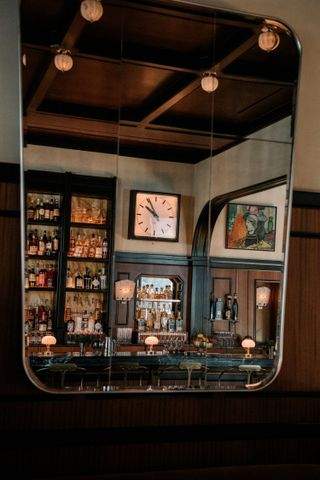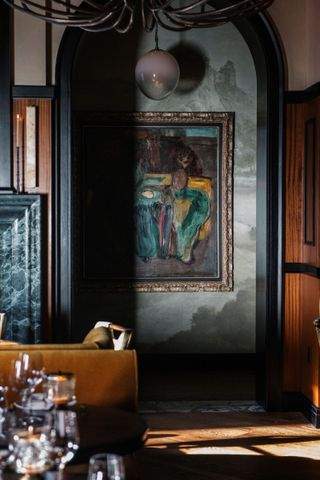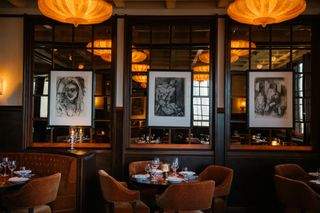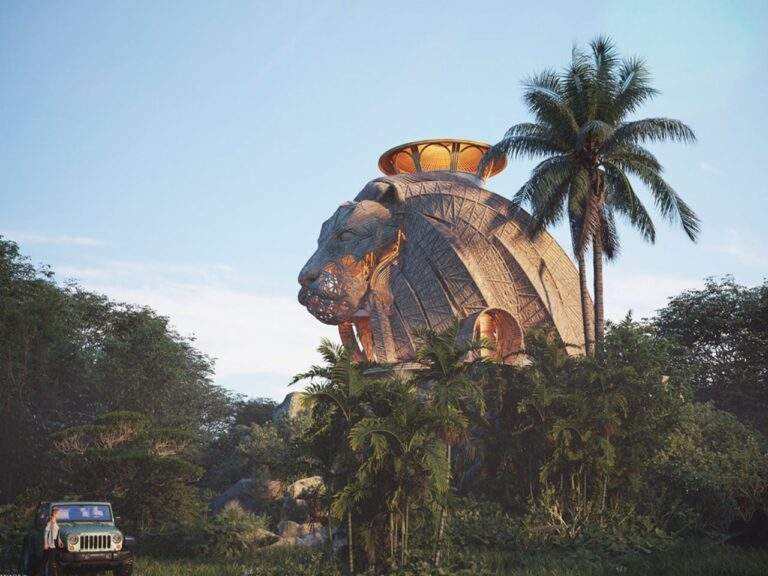In the last ten years, the newly established Hudson Yards district, located just southwest of Midtown Manhattan, has become a striking area filled with towering skyscrapers that significantly alter the famous skyline. These robust structures, characterized by their twisting forms and clover-like designs, feature expansive observation decks with innovative glass floors. In response to the needs of an increasingly sophisticated local and tourist population, numerous hospitality and retail establishments have also taken root in the area.
To mitigate the scale and soften the starkness of this grand environment, the new Locanda Verde restaurant has been introduced. This second location of the cherished Tribeca osteria is skillfully designed by the renowned firm Roman and Williams, incorporating thoughtful proportions, inviting details, and distinctive art deco elements that pay homage to New York’s rich Italian-American heritage.
Locanda Verde Hudson Yards: an exercise in scaling and distilled detailing
The expansive 557 sq m venue is designed across two levels by the waterfront, featuring a banquette-style dining area, an elegant bar reminiscent of a jewel box, and a more relaxed café setting. The design team drew inspiration from two key influences: the integration of restaurants within Tokyo’s office towers and a historically informed interpretation of modernism seen in Milan, offering a more refined aesthetic compared to the rustic approach taken by Roman and Williams at the original Tribeca location. A notable reference was the iconic Necchi Campiglio Villa, a striking art deco estate situated in the heart of the industrial city. The overall design harmoniously combines elements of classic elegance with modern functionality.
The grand central dining area is adorned in warm golden ambers and rich oranges. Velvet striped upholstery complements large inset mirrors and oversized hand-blown chandeliers in silver tones. Additionally, two dozen paintings by the largely overlooked abstract expressionist Robert De Niro Sr., the father of Hollywood actor and Locanda Verde partner Robert De Niro, contribute a timeless quality to the space.

Roman and Williams state that the use of simple geometric forms and durable local materials, such as stone sourced from nearby quarries and hand-forged metals, embodies the Italy-centric philosophy of Locanda Verde. The restaurant’s artistic heritage serves as an essential narrative element woven throughout its interior design.
Muralist Dean Barger, recognized for his work in other Roman and Williams-designed venues such as La Mercerie, Le CouCou, and Veronika, was commissioned to create intricate wall murals featuring horses, along with Cubist and Expressionist elements reminiscent of the renowned Portuguese artist Amadeo de Souza-Cardoso.


Modernist elements are showcased through a dark green Italian Verdi Alpi marble fireplace, bespoke Venini glass light fixtures, and furnishings crafted by one of the few remaining US mohair producers. Alabaster table lamps, designed by Stephen Alesch and Robin Standefer, co-founders of Roman and Williams, complement their ‘Rotonde’ fixtures, completing the extensive design transformation.
Subscribe to receive our daily collection of inspiration, escapism, and design narratives from around the globe directly to your inbox.
With an extensive menu featuring crudi, pasta, and a variety of shared dishes creatively reinterpreted by chef Andrew Carmellini, alongside a wine cellar boasting over 700 selections, guests are immersed in a unique and enchanting experience.


📅 Published on: 2025-02-18
For more inspiring articles and insights, explore our Article Archive.
Note: This article was reviewed and edited by the ArchUp editorial team to ensure accuracy and quality.







